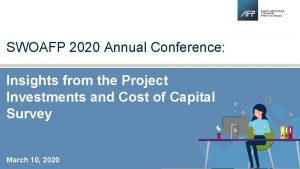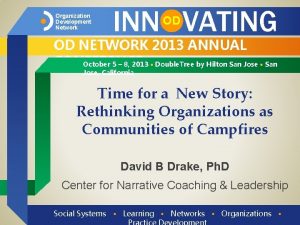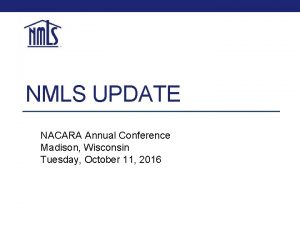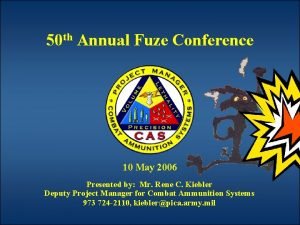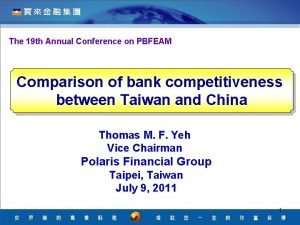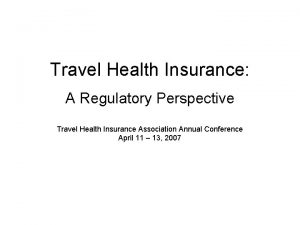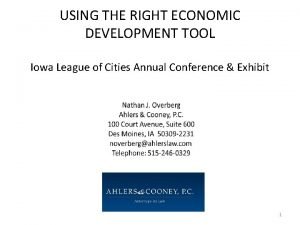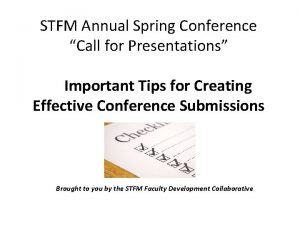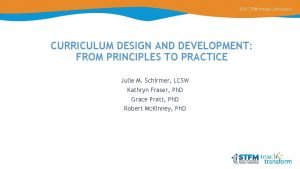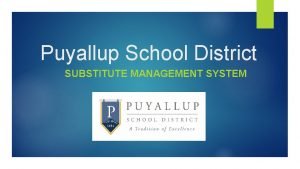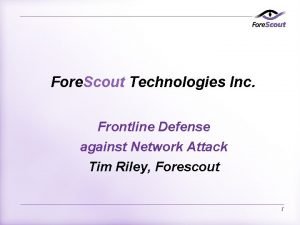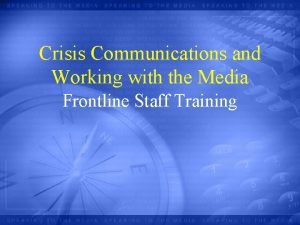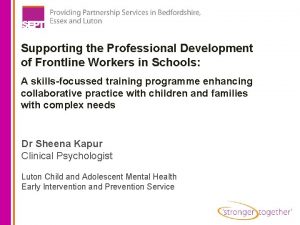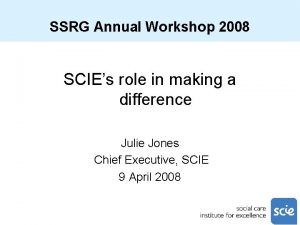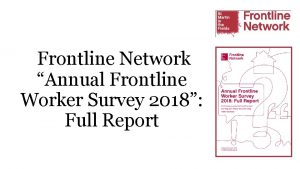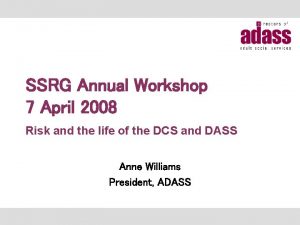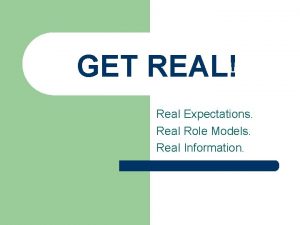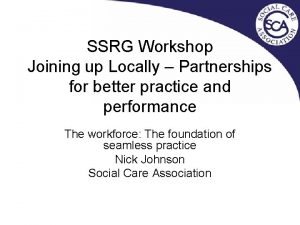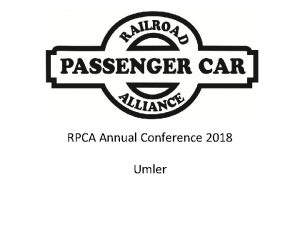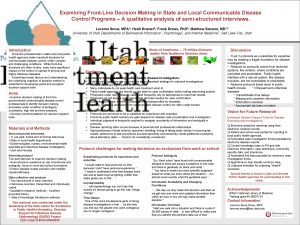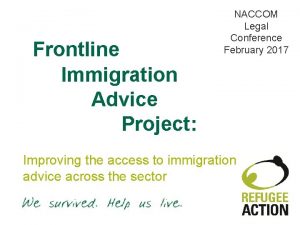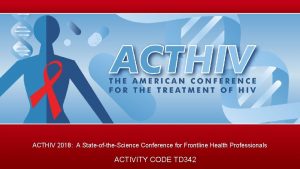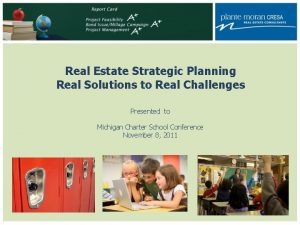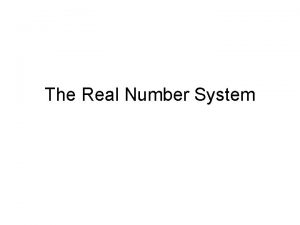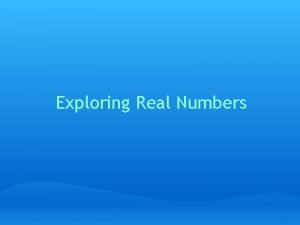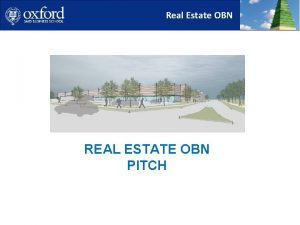SSRG Annual Conference Making it Real for frontline





















- Slides: 21

SSRG Annual Conference “Making it Real” …for front-line staff A toolkit to assist Public Sector Organisations deliver continuous service improvement

Background & Origins § ADSS Performance Networks § Started 1998 § “Learn by Looking” (benchmarking) § Enable CSSRs to understand & improve performance management and measurement § 4 regional groups (WM, GLADSS, SE, East) § Project-based work programmes § “Making it Real” developed in W. Mids.

Why continuous service improvement matters § To deliver better outcomes for service users § To improve staff morale, recruitment & retention § To maintain & improve Social Service & Corporate appraisal ratings

What is “Mak. Ing it Real”? ? § A structured framework; § Integration of top-down and bottom-up approaches; § A staff development tool.

How is it used? Structured workshop that can be delivered in two main ways: § General intro to PM issues § Service performance specific (may be PI focussed). § Not just a one-off, but a groupworking method: follow up with further sessions

What does it consist of? § 3 introductory chapters setting the context and coaching on set-up & delivery of the workshop § A series of group-work activities comprising: § Warm-up exercise. § Identification of areas for improvement. § Explore what’s done well and what’s done less well § Identification of what can be done to improve. § Action planning. § Evaluation.

Chapters 1 -3 § Ch. 1 - Overview § Definitions § Links between practice & performance information § Ch. 2 – Preparation – useful tips, e. g. § Identifying relevant PIs § “Focus on own service” - “Know your own information” § Ch. 3 – Delivery – “How-to”, e. g. § Establishing ground-rules § “It’s a workshop, not a lecture”

Chap 4 – Warm-up exercise § Provides introduction – “graphs for beginners” § Introduces concept of variation § Essential for understanding basic concepts of performance reporting/ monitoring § Exercise – the journey to work

Charting variation

Charting variation

Variation and overall performance

Can we improve it?

Performance improvement” § By taking the actions to improve the travel time you have exerted influence over this area of performance and achieved improvement.

Chap 4 - Warm-up exercise § Concept of variation § Exercise – Journey to work § Charting performance – painting the picture § Using the information to change performance (behaviour)

Chap 5 - How do we rate ourselves? § Look at a service or function-specific activity within the team / unit setting. § Involve team members in developing and recording perceptions of how well they and the team are working.

Chap 6 - What do well? § Deliberate focus on the positive aspects of performance in the team/unit § What changes have resulted in improved practice and/or user outcomes? § Contributions recorded and linked to previous session.

Chap 7 - What do we do less well? § Finding and talking about areas for improvement § Team must be able to discuss freely. § Within influence vs. outside of influence § Long-term vs. Short-term

Chap 8 - What could we do to improve? § Ideas-generation session § Focuses on tangible solutions § Continues prioritisation of tasks and ideas § Links in to business planning process

Chap 9 - Preparing an Action Plan § § Consolidates previous discussion Integrates it in to a coherent plan Links in to performance indicators Establishes responsibility

Chap 10 - Workshop Evaluation § Closes the workshop § Provides feedback § Learning for continuous improvement

Summary § Involves operational staff § Realistic planning § “Bottom-Up” without losing the corporate context § Further information available from simon. adams@tribalsecta. co. uk Tel 07968 -616285
 Https //bit.ly2v
Https //bit.ly2v Organization development network annual conference
Organization development network annual conference Problemitize
Problemitize Hepi conference
Hepi conference Nmls resource center
Nmls resource center Gie annual conference
Gie annual conference Fuze conference 2018
Fuze conference 2018 Annual conference on pbfeam
Annual conference on pbfeam Travel health insurance association annual conference
Travel health insurance association annual conference Gcyf 2011 annual conference
Gcyf 2011 annual conference 2017 dvhimss annual fall conference
2017 dvhimss annual fall conference Iowa league of cities annual conference
Iowa league of cities annual conference Stfm conference
Stfm conference Stfm annual conference
Stfm annual conference Puyallup schoology
Puyallup schoology Frontline excellence
Frontline excellence Frontline defense systems
Frontline defense systems Frontline inside the teenage brain
Frontline inside the teenage brain Frontline ownership
Frontline ownership T answer
T answer Grraacceess
Grraacceess Supervisor safety leadership training
Supervisor safety leadership training
